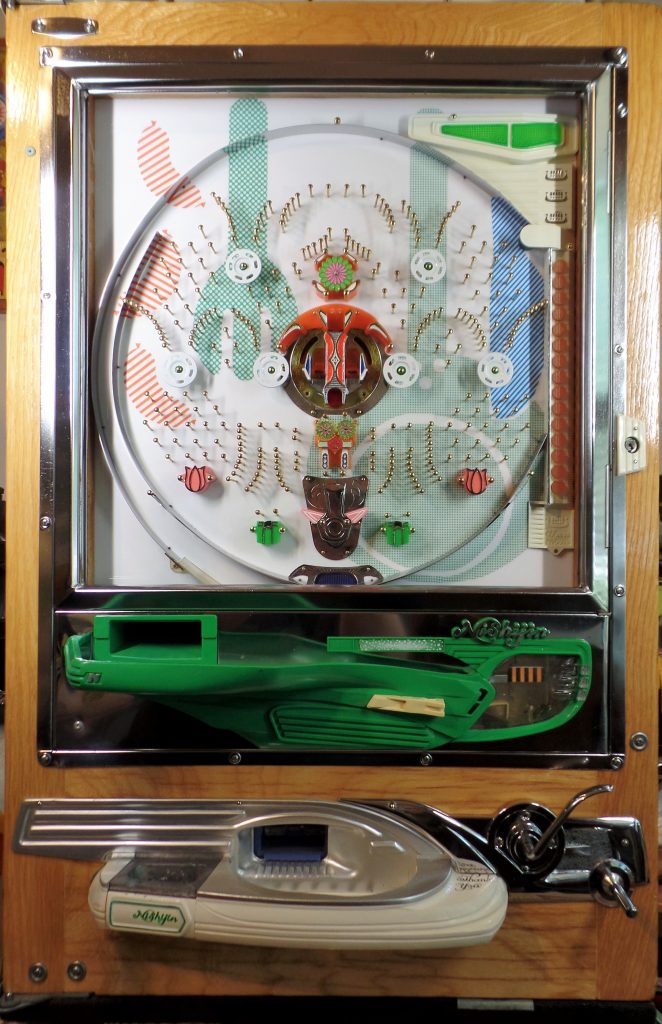What is pachinko?
The minimum balls for the machine to work is around 250 balls with about 200 in the top supply tray in back and the rest in the play tray in the front. 500 to 1,000 is recommended so you don’t have to keep stopping to reload the machines supply tray. Put 200 to 750 balls in the top supply tray in back. Put 50 balls in the top tray in front. Pull down the flipper – let go very quickly and you are playing pachinko!
Pachinko machines have been around from the 1940’s, about 85% of the vintage pachinko machines are from the 1970s. About 10% are from the 1960s and the rest are from the 1950s or earlier. Generally most vintage pachinko machines are worth about $20 to $100 depending on many factors. Used pachinko machines were exported to the U.S. and resold for recreational use only. There were hundreds of thousands these pachinko machines imported in the 1960s and 1970s so they typically aren’t valuable.
There is one pachinko parlors in the U.S. that I know of, Pachinko World open in Wilmington North Carolina July 2015. Here is a link to their Face Book page with contact information PachinkoWorld


RULES FOR PLAYING PACHINKO
GAMES FOR PACHINKO
One of the nicest things about a pachinko is the fact that there are no definitive rules for playing. The primary objective of the game is to win more balls, but its use is limited only by the imagination of the individual players. But just to get you started in enjoying your game, we have devised several different games you may like to try:
GAME A
Starting the game:
1) Empty all the balls into your plastic storage cup.
2) Put 20 balls in the playing tray.
3) Put the remainder in the Feeder Tray.
Keep track of the time played. Play by shooting the balls into the machine and attempt to get the balls in “win” pockets. If you win all the balls from the machine, or if you lose all the balls to the machine, the game is over. Repeat steps 1 through 3 for the next game.
OBJECT
The best player (or winner) is determined by the player who can win all the balls from the machine in the least amount of time.
GAME B
OJBECT
To win more balls out of the machine than any other player within the 5 minute game.
This game is best to play with a small number, 2 to 4 players.
GAME C
Start the game in the same manner as in Game A. Each player is allowed only 10 shots per turn. Keep track of the total number of jackpot balls scored within the 10 shots. Alternate turns as each player shoots his 10 balls. Total the number of jackpot balls scored for each player. Whoever has the most left after his turn is the winner.
OBJECT
To score more jackpot balls than your opponent.
The game is best to use when you have a big party with many people wanting to play.
